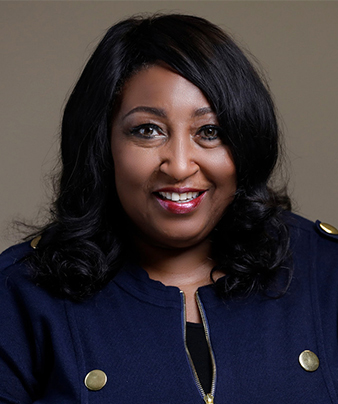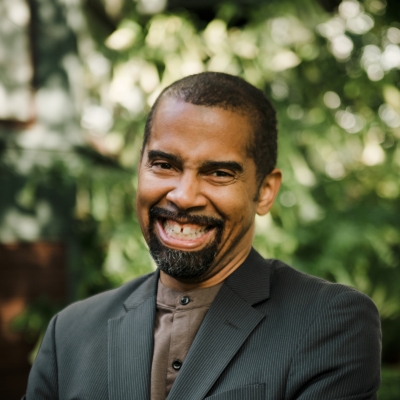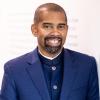Meet the Moment: It isn’t enough to fund change. We must change too.
Thanks, Marcus and Dwayne, and Cathy, for your wisdom and your leadership. And Cathy, thank you for inviting me to jump into the conversation.
I’ll be honest: I’ve been putting off answering your question “How do foundation leaders stay clear-eyed in this moment?” As I sit to write, our Northern California skies are hazy with wildfire smoke. It strikes me as a metaphor for this moment, 19 months into COVID, when our visions of a post-pandemic future are shifting yet again. I definitely don’t feel clear-eyed.
I am learning that being clear-eyed is not about being able to see the hills on the horizon on a crisp, blue-skied day. Rather, it is knowing who you are, where you are, and where you are going, even in the midst of the densest fog. It is about knowing what lies beyond the haze.
Beyond the haze is a democracy still under attack; powerful movements that are exhausted, fragile, and in need of long-game support even as that have radically shifted what is possible; profound racial, gender and economic inequities exposed by and deepened by the pandemic. Beyond the haze is a climate crisis that demands urgent and immediate action.
Last year, as we faced a pandemic and a racial reckoning, the sector stepped up with new bold commitments to racial justice grantmaking, increased payouts and improved grantmaking practices. A key part of the work ahead is to make any progress durable, to ensure that if our institutions took a leap, that we do the internal work to live into that leap and embody that progress. In my own leadership, I find it helpful to focus on two practices that keep me clear:
1. Embed and prioritize care (in our organizations, in our movements, in our practices)
The pandemic has consistently posed a challenge: will we take care of each other? Everywhere I look these days, I see a need for more care. Most have recently been stretched in difficult ways, and we don’t have good systems in place to support one another. As a leader I look for how we can embed care in our organizations, in our funding practices, and in the movements that we support. Burnout is a real threat to progress. The organizations we support are struggling with how to balance the urgency of this moment with the need for greater sustainability.
As the resourcing entities in our ecosystems, we have a role to play in creating sustainability that counters our sector's default practices which have contributed to its lack. We can show up with care and partnership in our grant practice with multi-year, general operating support, streamlined grants processes and less burdensome reporting requirements.
We can also do more to center the people we support. In 2018 we began inviting grantees to apply for sustainability and wellness stipends in addition to their grants that they could use for the wellness and sustainability of their teams. Last year, we did away with the application and began adding these stipends into most of our grants. When we find ways to work from a place of care, we are able to start living into the world we want to see.
2. Staying clear-eyed requires the work of dreaming
I was asked recently to imagine my most hopeful vision of the world fifty years from now—the world that our grants and grantees are working to build. I was surprised to find that my own well of hope and radical imagination was so depleted. I recognized this as being a toll of these times and an expression of grief. As the deep inequities in our society were recently exposed as a matter of life and death, I was so sure that we were entering a time of deep transformation, a “portal” moment. And yet 18 months later not only have many of those systems remain unchanged, but we’ve seen a retrenchment. The wealthy are wealthier, and those with less power have borne the brunt of our suffering. The deep lessons about our interdependence haven’t led to old hierarchies crumbling and new systems replacing them… yet.
A quiet voice of hopelessness creeps in, asking if the pandemic and the uprisings didn’t bring about change, what will?
I realize now, that in the midst of all the managing, working with boards, and writing (and rewriting) return-to-office plans, the most important work to do is the work of dreaming and envisioning what a just future holds. These visions are the container for all of our other work. As leaders, it isn’t enough for us to be experts on what is broken. Rather we need to be humble but determined in our belief that another way is possible and that our collective efforts will bring that world into being.
If our work doesn’t come out of transformative visions, it won’t be transformative. It might be the worst kind of philanthropy—small, sometimes cynical changes around the edges of systems that are killing people.
I know in my organization, our crises response last year was extremely externally focused. Now I am tending to the internal work, the work of embedding care, of grounding our work in transformative visions, and the work of ensuring that recent progress is meaningful and sustained. We can’t expect transformational change, without being willing to change ourselves.
Next Up

I'm handing the baton to you Eddie Torres, President and CEO of Grantmakers in the Arts. Like Cathy did for me, I am going to ask you a question:
What exactly holds us back from making more dramatic transformations in our philanthropy?





